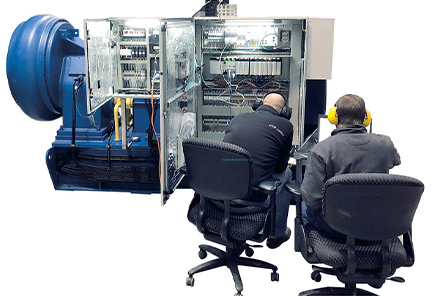
Programmable Logic Controllers (PLCs) are essential components in modern industrial automation systems. They are used to control and monitor complex processes in manufacturing, power plants, transportation, and many other industries. Understanding how to program PLC controllers is an invaluable skill that can open up a world of opportunities for both beginners and professionals.
PLC programming involves designing and implementing a set of instructions that tell the controller how to perform specific tasks. These tasks can range from simple instructions such as turning on and off a motor, to more complex operations like controlling temperature, pressure, and flow rates in a chemical plant.
For beginners, learning PLC programming can seem overwhelming at first. However, with the right approach and resources, anyone can become proficient in PLC programming.
1. Learn the basics of PLC programming
To start your journey towards becoming a pro in PLC controller programming, it is essential to learn the basics of PLC programming. This includes understanding the fundamental concepts of ladder logic, which is the main programming language used in PLC programming. Familiarize yourself with the different types of PLCs available in the market and their specific programming languages.
2. Study programming languages
PLCs use various programming languages, such as ladder logic, function block diagrams (FBD), structured text (ST), and sequential function charts (SFC). Each programming language has its strengths and weaknesses, and it is crucial to understand which language is best suited for a particular application. Study the syntax and functionality of these languages to gain a comprehensive understanding of PLC programming.
3. Get hands-on experience
One of the best ways to learn PLC programming is through hands-on experience. Familiarize yourself with different PLC software and hardware platforms and practice creating programs in a simulated environment. Many PLC manufacturers provide free software for programming and simulation, which can be a great resource for practice. Additionally, try to find opportunities to work on real-world projects or collaborate with professionals in the field to gain practical experience.
4. Understand PLC hardware
PLC programming involves not only software but also hardware components. Gain a good understanding of PLC hardware and the different types of input and output modules. Learn how to connect and configure these modules to the PLC controller and interface them with the external devices. Understanding the hardware aspects of PLCs will enable you to design more efficient and reliable control systems.
5. Stay updated with industry trends
The field of PLC programming is constantly evolving, with new technologies and methodologies emerging regularly. Stay updated with the latest industry trends and advancements to enhance your programming skills. Attend workshops, seminars, and conferences related to PLC programming to learn from experts and network with professionals in the field. Subscribe to industry publications and online forums to keep yourself informed about the latest developments in PLC controller programming.
6. Troubleshooting skills
Inevitably, you will encounter challenges and issues while programming PLC controllers. Developing strong troubleshooting skills is essential for becoming a pro in PLC programming. Learn how to analyze and debug programs effectively and efficiently. Understand common errors and their causes to save time and effort in finding solutions.
Share this post: on Facebook on Google+